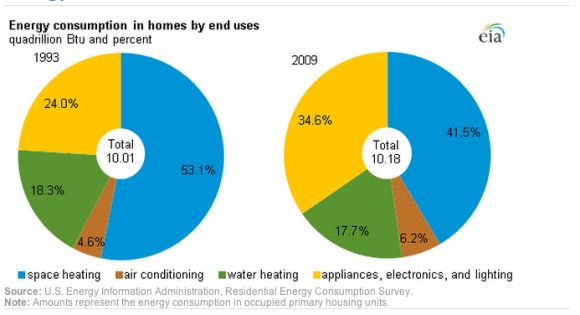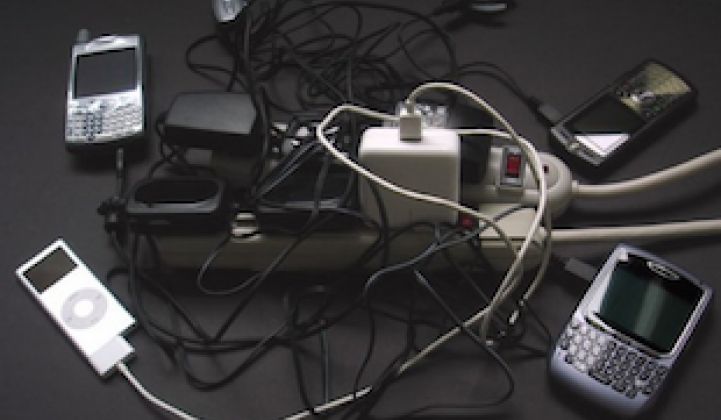Heating and cooling have historically accounted for the majority of energy use in American homes. But that has changed.
A new survey from the Energy Information Administration shows that heating and cooling made up less than half of residential energy use for the first time in 2009. A decade and a half earlier, they were responsible for nearly 60 percent of consumption in the typical home. There aren't many surprises there. Building materials and equipment have gotten way better, local and federal efficiency incentives have expanded, and more people have moved to warmer climates.
The more surprising finding is how much energy consumption for appliances, lighting, and all kinds of other consumer gadgetry has expanded. As the figure below shows, the 10 percent drop in heating and cooling was completely offset by a 10.6 percent increase in electronics:

This shift happened even as improved federal standards made our appliances more efficient. According to the Department of Energy, today's clothes washers use 70 percent less energy than in 1990 and dishwashers use 40 percent less energy.
And these figures are from 2009, the most recent year that full reporting was available through the EIA survey. At that time, the smart phone revolution was just taking off and tablets like the iPad hadn't even been released. The ecosystem of techno-gadgetry has exploded since then.
The consumer tech revolution combined with our love for big homes has prevented an overall decline in residential energy use. Another recent EIA report found that homes built between 2000 and 2009 were 30 percent larger than those built before 2000. As a result, today's homes consume 2 percent more energy even though appliances and building materials have improved drastically.



